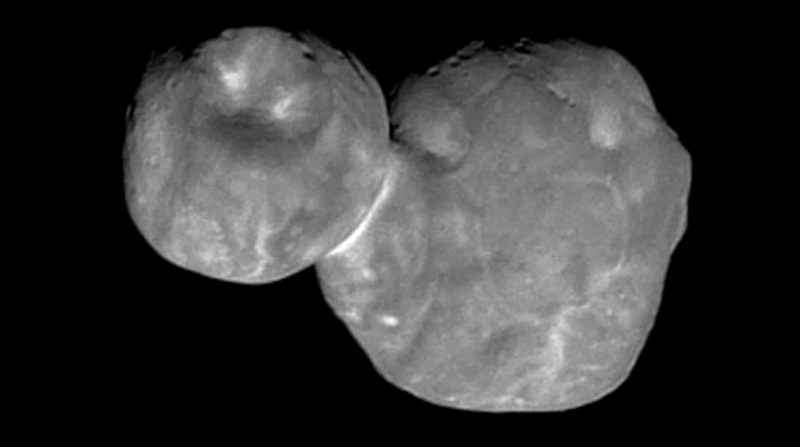
Darn. Like many others, I had really liked the name Ultima Thule for an object on the fringes of our solar system, the most distant object ever to be visited by an earthly spacecraft. The name is a mythological reference to a faraway, mysterious land, someplace distant and cold. The craft that visited it was, of course, New Horizons, the same craft that gave us the amazing images of Pluto in 2015. Following its Pluto encounter, New Horizons was pushing on into the Kuiper Belt, aiming toward an object known originally as 2014 MU69, when space scientists and the public decided it needed a new name. Shortly before the New Horizons encounter on January 1, 2019, they chose the name Ultima Thule. Then a reporter at Newsweek pointed out that the Nazi party had used the phrase Ultima Thule to refer to the mythical homeland of the Aryan people. The term apparently remains in use by modern so-called alt-right groups. Now the object has a new name yet again. The name is now Arrokoth, which means sky in the Powhatan and Algonquian languages.
NASA held a naming ceremony in Washington D.C. yesterday (November 12, 2019), to give 2014 MU69 its new official name Arrokoth. The name was chosen based on the local Native American culture in Maryland, where the New Horizons mission control center is based.
A wealth of data from New Horizons’ encounter with Arrokoth is still being sent back from the spacecraft to Earth for analysis. Scientists used New Horizons’ cameras to glimpse its strange, double-lobed shape, indicating a possible gentle collision of two objects long ago. Arrokoth also appears to be covered in methane or nitrogen ice, giving it a red tinge.
Toward the end of 2019, around the time the name Ultima Thule came into use, Mark Showalter, a planetary astronomer at the SETI Institute and investigator on the New Horizons mission who led the naming process, had told Newsweek:
‘Beyond the limits of the known world’ – that’s such a beautiful metaphor for what we’re doing this year.
And so it was. But the association with Nazis and the alt-right apparently caused push-back. Hence the name change.
I just read a wonderful book on the alt-right’s use of social media (Antisocial: Online Extremists, Techno-Utopians, and the Hijacking of the American Conversation, by Andrew Marantz). In it, he describes how the alt-right and white nationalist movements reject much of what mainstream media has to say as “lies.” They also have a huge disdain for political correctness.
One can only imagine the alt-push-back going on in the alt-right media community today, given this name change.

Bottom line: The Kuiper Belt object formerly known as 2014 MU69 – later known as Ultima Thule – has been renamed again. Its new name is Arrokoth.
EarthSky 2020 lunar calendars are available! They make great gifts. Order now. Going fast!











